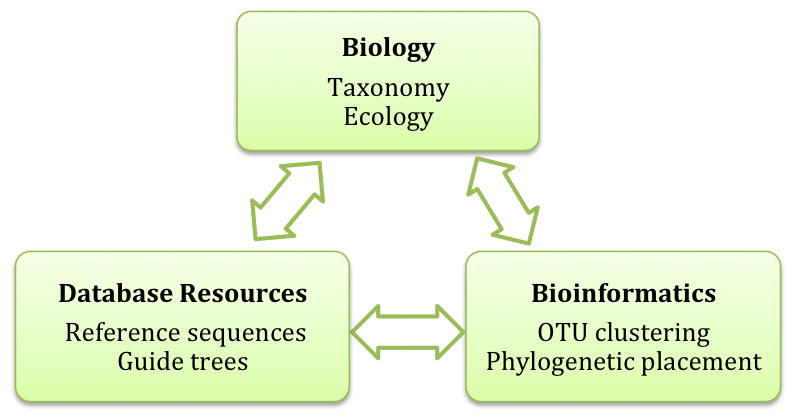Figure 5.

For future success, biodiversity research must adhere to a trifecta of biology, bioinformatics and database resources; none of these foci can exist in isolation, and each area must serve to inform the others. Biological questions drive high-throughput studies, and so computational pipelines and cyberinfrastructure need to functionally inform our knowledge of ecosystem processes. Likewise, computational resources must be complementary, whereby bioinformatic outputs are effectively databased, and evolving database resources produce continuing refinements in analytical pipelines. Seamless integration between these sectors will be crucial for enabling comparative metadata analyses and untangling complex ecological patterns – for example, mining published datasets for co-occurring species, or linking specific OTUs with environmental parameters (pH, salinity, temperature, etc.).
